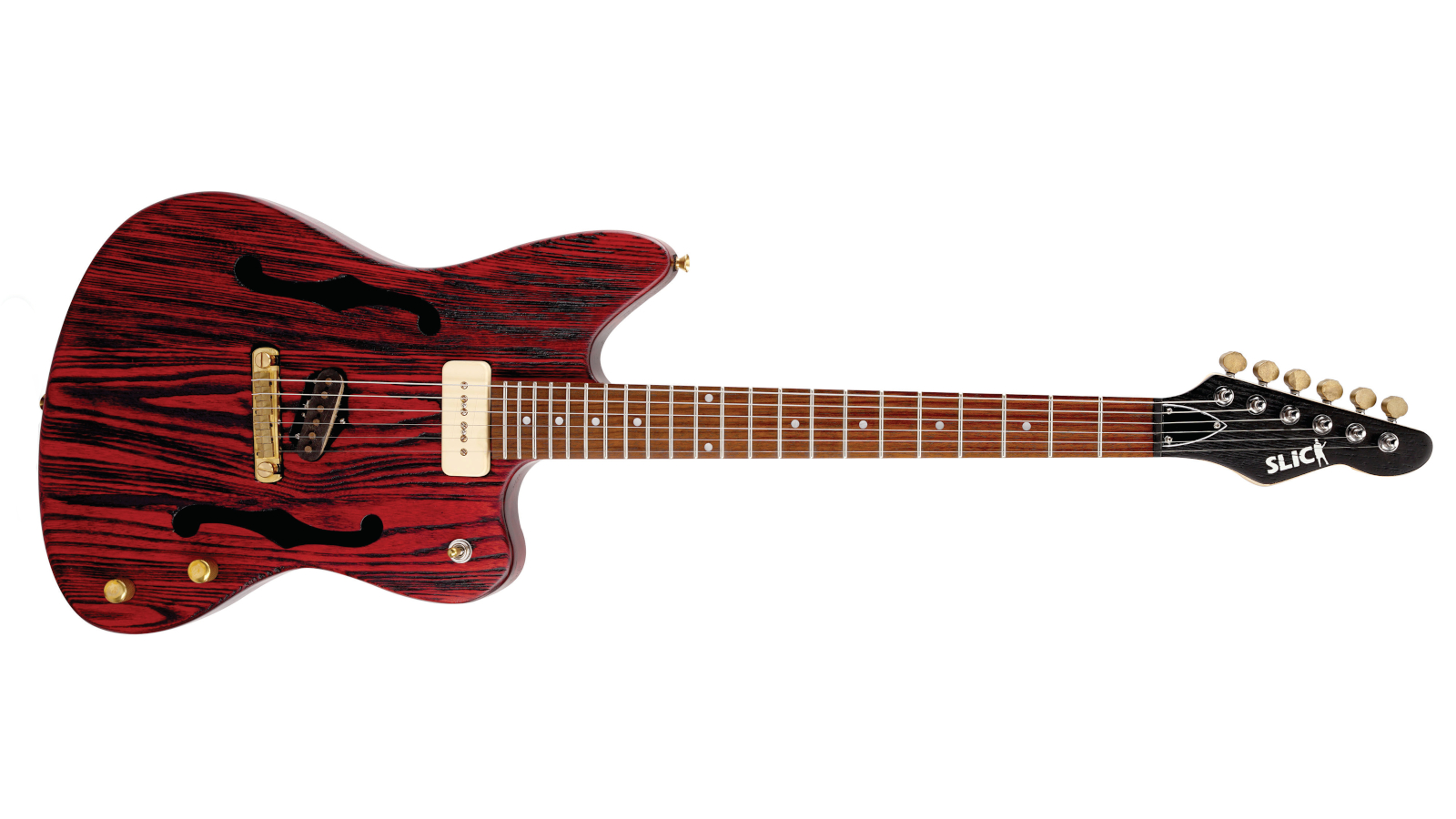GuitarPlayer Verdict
It’s a lot of guitar for the money and one that makes you appreciate this company’s dedication to building high-quality instruments
Pros
- +
Good playability
- +
Potent bridge pickup tones
- +
Great look
Cons
- -
Neck pickup is a little dark sounding
- -
Pickup switch is easy to hit unintentionally
You can trust Guitar Player.
An electric guitar with a Jaguar-style, offset semi-hollow body and a Tele/Gib pickup setup could easily describe a pricey boutique affair that borrows from Fullerton and Kalamazoo designs of the ’50s and ’60s to create a cool modern-day hybrid.
It also describes to a tee the Slick SL56, which, besides being extremely affordable, goes all the way into boutique territory by featuring a P-90 in the neck position and a T-style single-coil sitting next to a custom solid-brass wraparound bridge with six chunky brass adjustable saddles.
Brass was deemed the “musical metal” in the days of yore, and its use is straight out of the playbook of Alembic and others from the late ’60s and ’70s, when brass was thought to equal greater sustain and generally better tone. Here it adds an interesting throwback twist that makes the SL56 a unique beast.
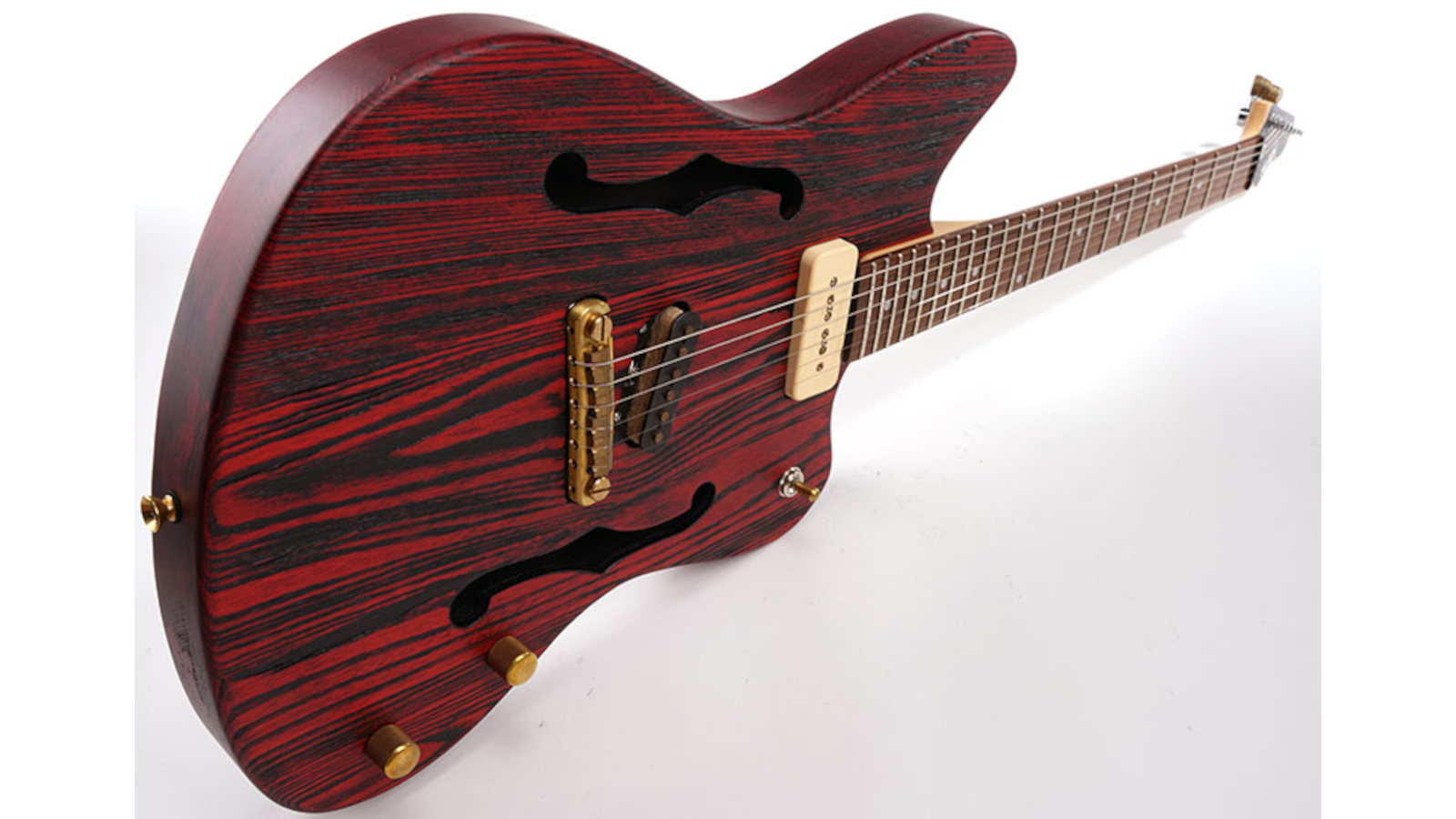
The Aged Crimson Ash finish (one of six available colors) looks neat in a raw sort of way, with the red and black shades highlighting the open-grain wood. Slick says no grain filler or polyurethane sealer is used, and that just a single coat of old-fashioned automotive paint is sprayed on and sanded back.
The process prevents the pores from becoming clogged, so the wood can breathe. It seems to work, as you can hear the acoustic resonance when tapping on the body.
The solid maple neck is attached with a milled-aluminum plate engraved with Earl Slick’s image, and carved in a comfortable C shape that feels awesome with its silky-smooth natural finish.
The headstock wears a black paint job that shows off the tuners’ brass buttons, themselves being Slick’s own design that features bronze crown and pinion gears. They’re smooth and precise, with no backlash, and the guitar stayed nicely in tune during testing.
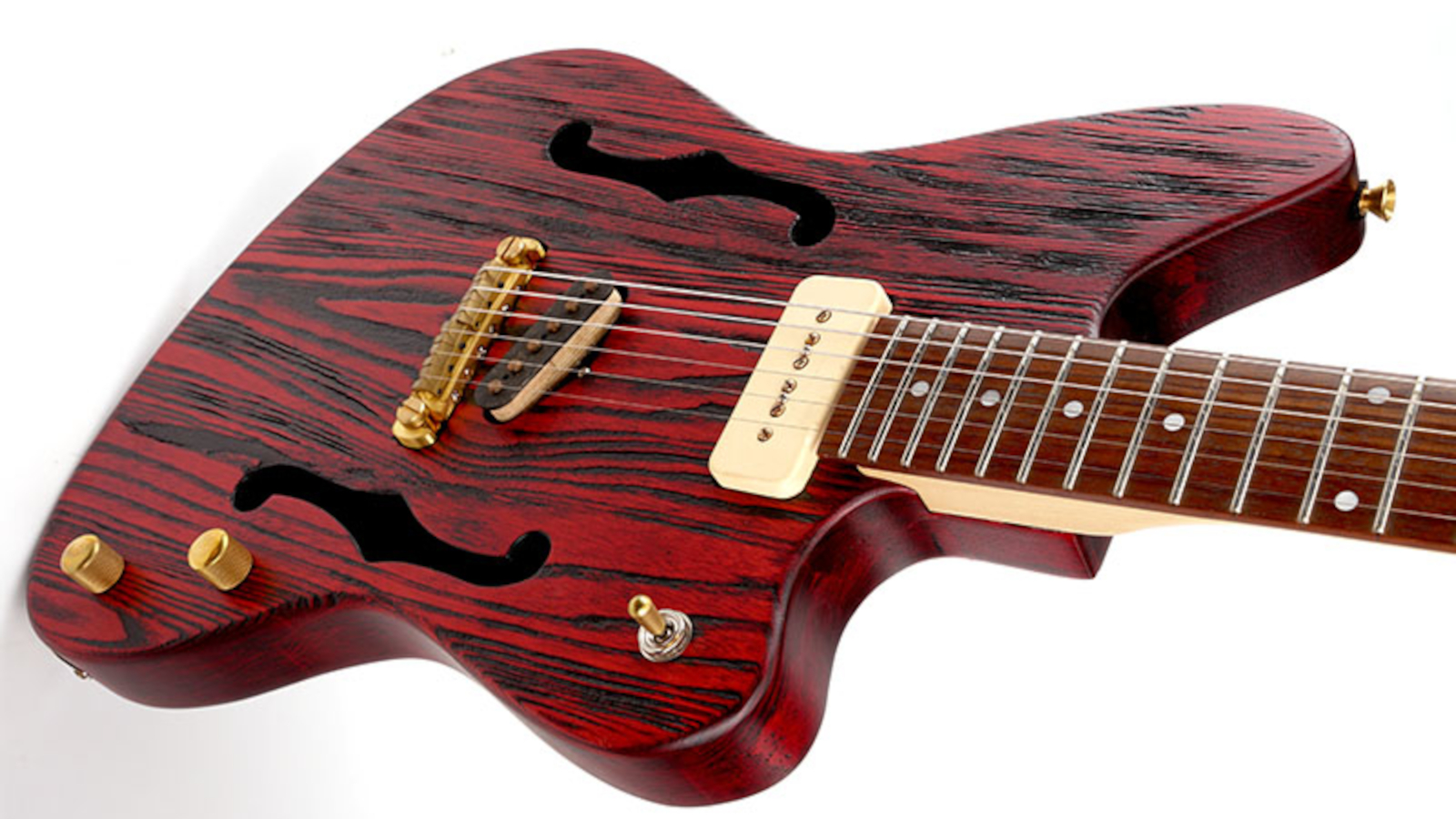
A hand-slotted graphite nut fitted to the tilt-back headstock provides the correct break angle for the strings, further enhancing stability, and the factory setup made for low, buzz-free action and solid intonation.
My only ergonomic issue is the toggle switch’s location on the lower horn, which makes it easy to hit unintentionally.
The black walnut fingerboard has white position dots and carries 22 medium-jumbo frets that are lightly polished, evenly crowned and rounded off on the tips. It makes for a nice-playing guitar that sustains well – as might be expected with several ounces of brass onboard – and offers easy playability.
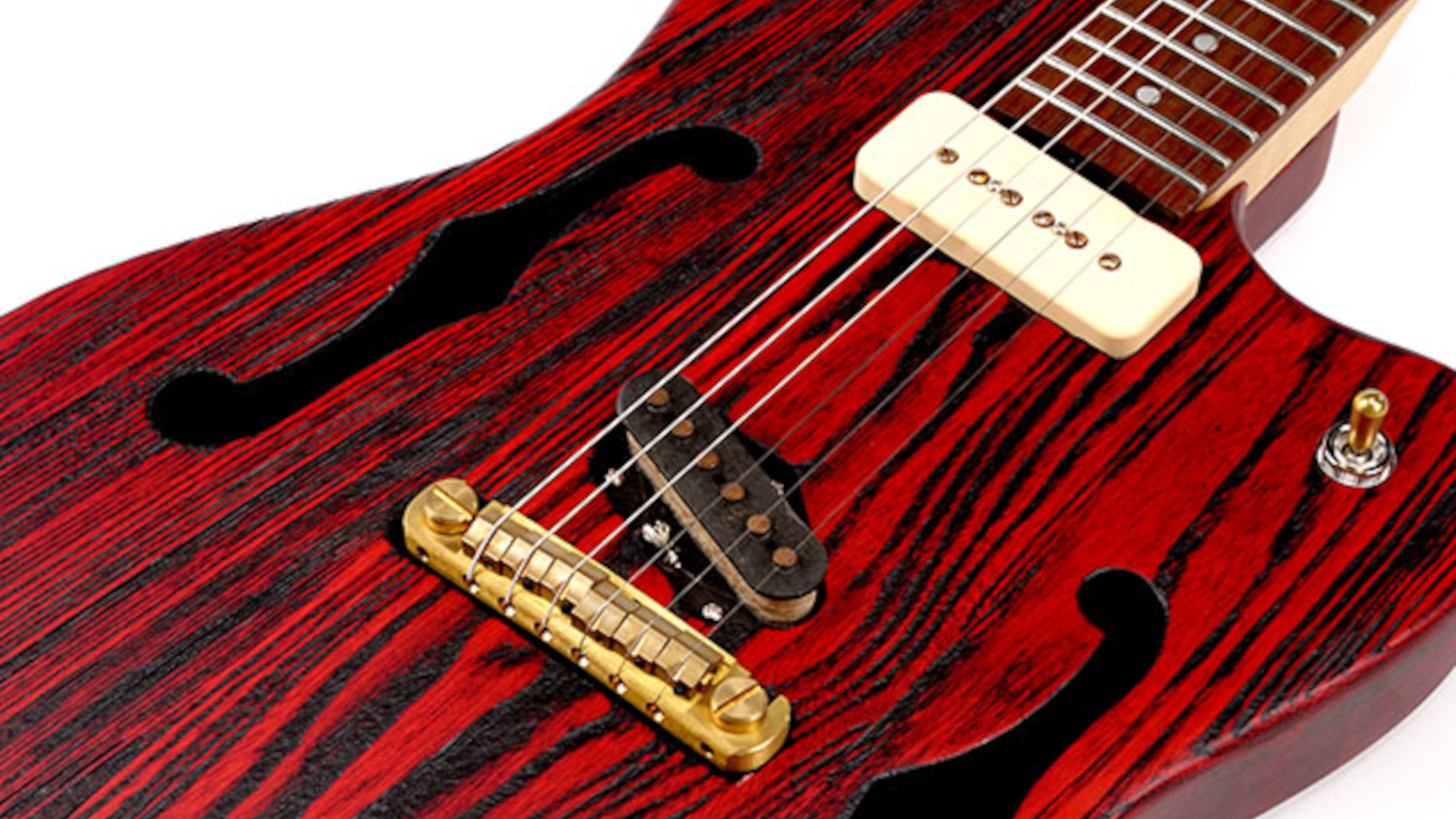
Another department where the SL56 stands out is its hand-aged Alnico-magnet pickups: an overwound Fullerton T-style in the bridge and a Slick Junior P-90 single-coil in the neck. They’re wired via a three-way switch (with rounded brass tip) to volume and tone pots that are also topped with knobs made of machined billet brass.
Tested on some gigs and plugged into a Fender Deluxe Reverb with distortion pedals from Warm Audio and Maestro for grind, the SL56 proved a good-sounding guitar that delivered the kinds of tones you’d expect from two very different types of single-coil pickups.
My only caveat is that the neck pickup is very round sounding and doesn’t have the top-end bite expected from a P-90. Perhaps that’s intentional, as the neck position sounded good for rhythm and slide playing once the amp’s EQ was adjusted accordingly.
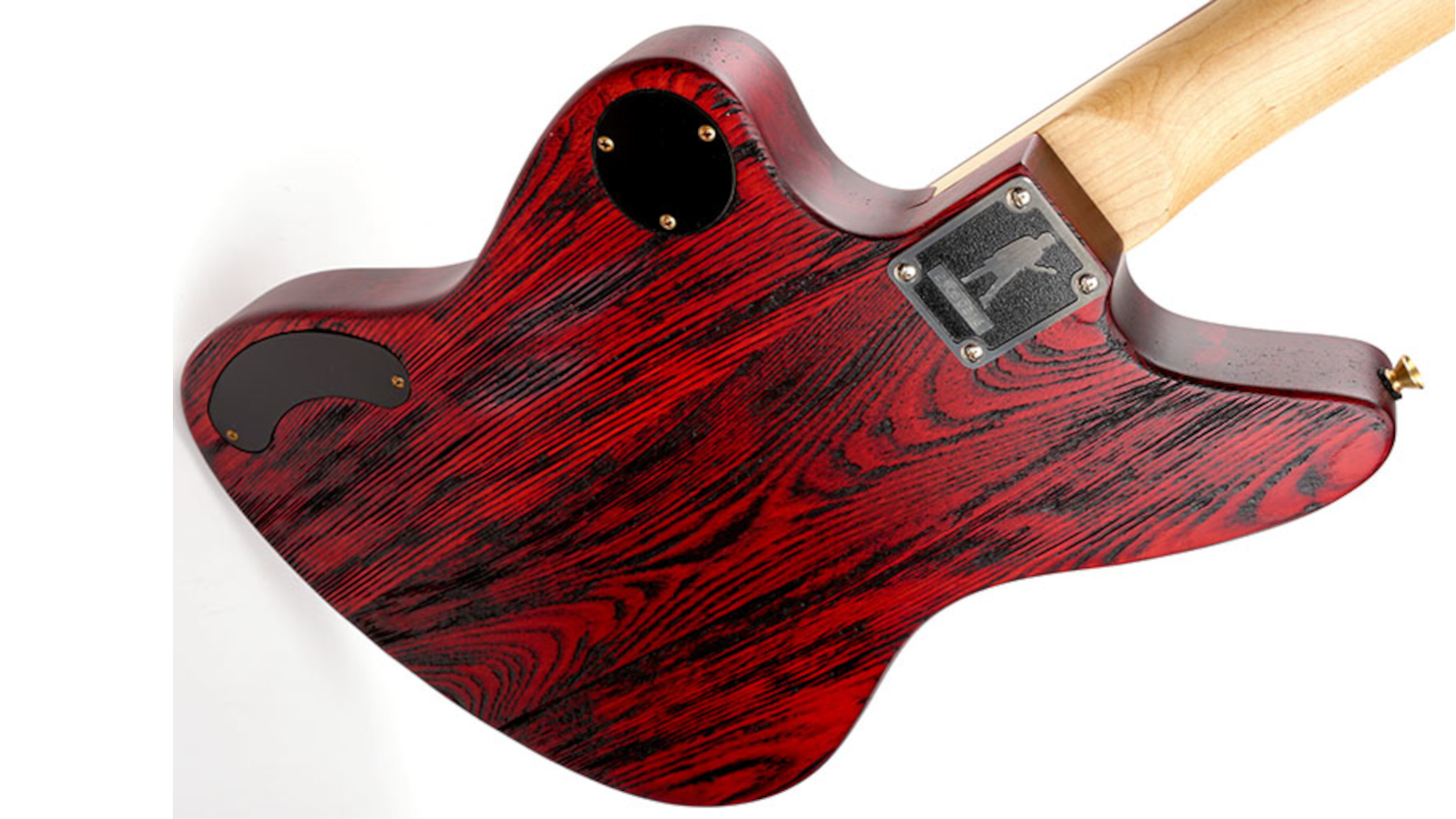
However, because the bridge pickup was so much brighter sounding, it was necessary to fiddle with the tone control more to get a balanced sound with both pickups on, which is also noise canceling because the P-90 is reverse-wound, reverse-polarity.
The bottom is that the Slick SL56 is a fun guitar
In the end, it was simpler to go with the bridge pickup, taking advantage of its crispness and cool dynamics for rhythm, and rolling back the tone control and/or tweaking the pedals’ EQ for buttery high-gain sounds.
As such, the SL56 was somewhat reminiscent of playing a thinline Fender Esquire, where the slice of the back pickup is tempered by the airiness that the chambered body brings.
The bottom is that the Slick SL56 is a fun guitar that delivers the boutique-on-a-budget experience in spades. In fact, it has so much going for it, you can’t help being blown away by its crazy low price.
It’s a lot of guitar for the money and one that makes you appreciate this company’s dedication to building high-quality instruments that punch well above their price class.
Specifications
- NUT: Graphite, 1.693” wide
- NECK: Canadian hard rock maple
- FRETBOARD: Black walnut, 25 ½” scale
- FRETS: 22 medium jumbo
- TUNERS: Slick 14:1 with brass buttons
- BODY: Chambered solid ash
- BRIDGE: Solid brass billet wraparound with six adjustable saddles
- PICKUPS: Slick Junior Alnico V P90 8.0 kΩ neck, Slick Fullerton Alnico V 9.6 kΩ bridge,
- CONTROLS: Volume, tone, three-way selector
- FACTORY STRINGS: .010–.046
- WEIGHT: 6.75 lbs (tested)
- EXTRAS: Aged brass hardware. Finish options. Tweed hard case
- BUILT: China
Visit guitarfetish.com for more information.

Art Thompson is Senior Editor of Guitar Player magazine. He has authored stories with numerous guitar greats including B.B. King, Prince and Scotty Moore and interviewed gear innovators such as Paul Reed Smith, Randall Smith and Gary Kramer. He also wrote the first book on vintage effects pedals, Stompbox. Art's busy performance schedule with three stylistically diverse groups provides ample opportunity to test-drive new guitars, amps and effects, many of which are featured in the pages of GP.
"We tried every guitar for weeks, and nothing would fit. And then, one day, we pulled this out." Mike Campbell on his "Red Dog" Telecaster, the guitar behind Tom Petty & the Heartbreakers' "Refugee" and the focus of two new Fender tribute models
“A good example of how, as artists, you have to blindly move forward with crazy ideas”: The story of Joe Satriani’s showstopping Crystal Planet Ibanez JS prototype – which has just sold for $10,000
